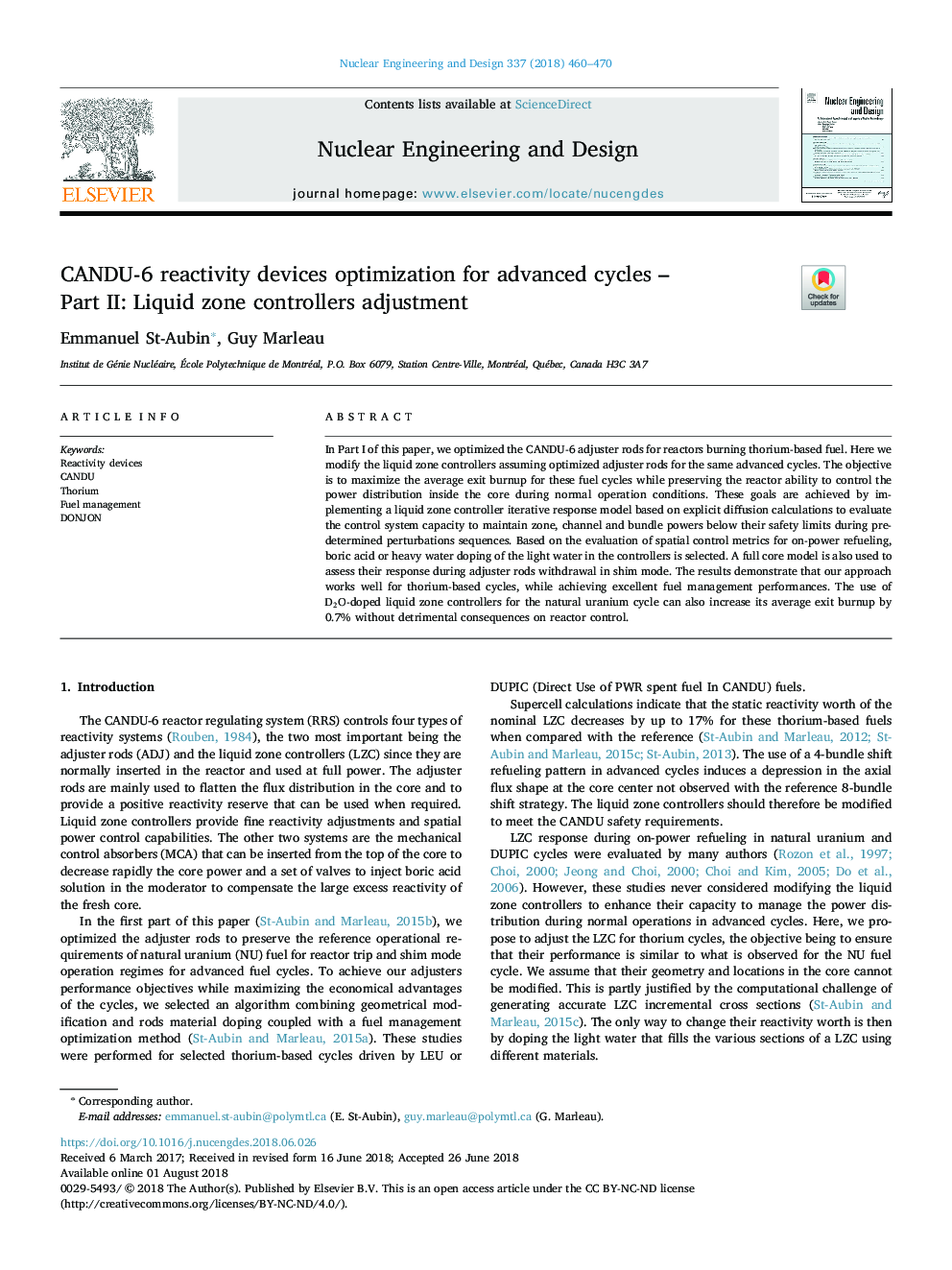| Article ID | Journal | Published Year | Pages | File Type |
|---|---|---|---|---|
| 6758632 | Nuclear Engineering and Design | 2018 | 11 Pages |
Abstract
In Part I of this paper, we optimized the CANDU-6 adjuster rods for reactors burning thorium-based fuel. Here we modify the liquid zone controllers assuming optimized adjuster rods for the same advanced cycles. The objective is to maximize the average exit burnup for these fuel cycles while preserving the reactor ability to control the power distribution inside the core during normal operation conditions. These goals are achieved by implementing a liquid zone controller iterative response model based on explicit diffusion calculations to evaluate the control system capacity to maintain zone, channel and bundle powers below their safety limits during pre-determined perturbations sequences. Based on the evaluation of spatial control metrics for on-power refueling, boric acid or heavy water doping of the light water in the controllers is selected. A full core model is also used to assess their response during adjuster rods withdrawal in shim mode. The results demonstrate that our approach works well for thorium-based cycles, while achieving excellent fuel management performances. The use of D2O-doped liquid zone controllers for the natural uranium cycle can also increase its average exit burnup by 0.7% without detrimental consequences on reactor control.
Keywords
Related Topics
Physical Sciences and Engineering
Energy
Energy Engineering and Power Technology
Authors
Emmanuel St-Aubin, Guy Marleau,
